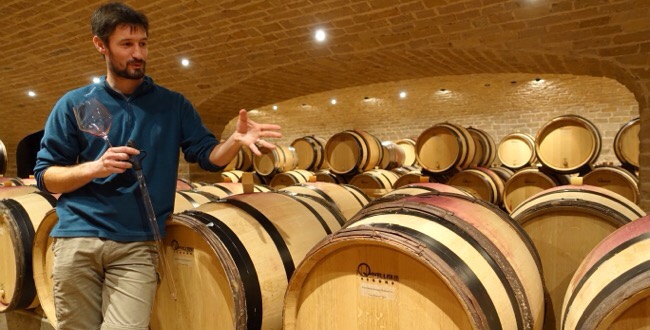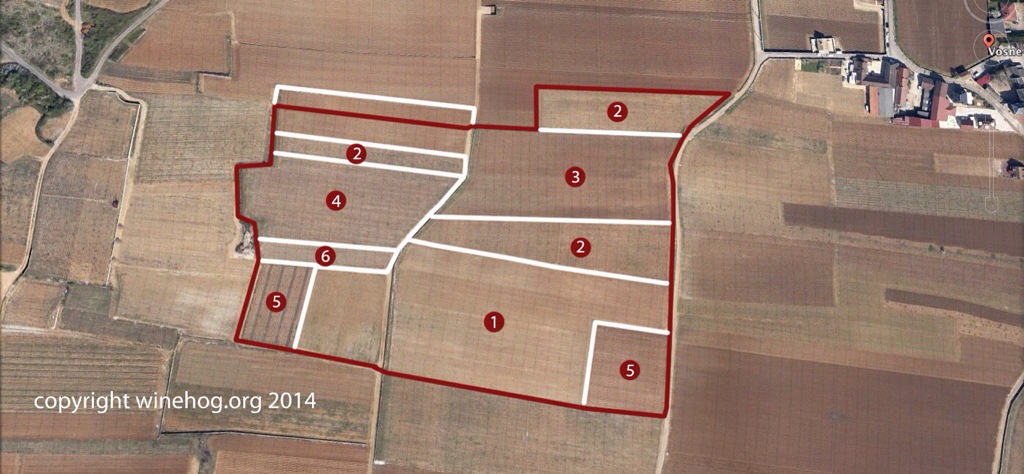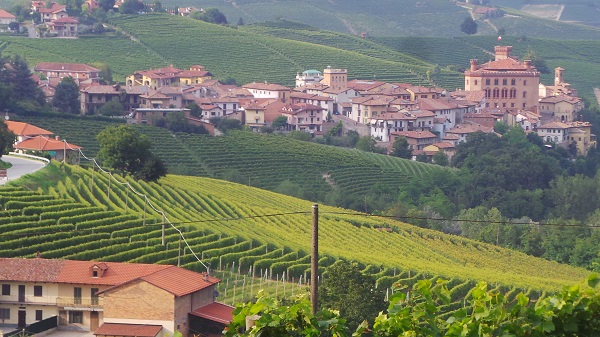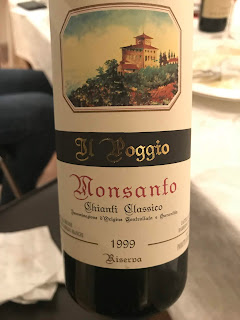Vinmøte Roar 27. september 2018
Morey-Saint-Denis Clos de la Bussière 1998, Domaine G. Roumier
En moden burgund, litt generisk og kjedelig flat i uttrykket. Sliten allerede. Men jeg har egentlig aldri blitt imponert av vinen. 89 poeng
Tom H sier følgende etter en smaking av denne vinen i flere årganger:
2004 var i ferd med å starte nedturen, men gav god drikkeglede med en gang, 89p.
-05 var en gedigen skuffelse, og flasken kan ikke ha vært korrekt, N/R.
Derimot var 07 nær perfekt moden med rød frukt og jordlige undertoner, deilig vin - 92 poeng.
2008 var WOTN, perfekt moden med jordlige toner, nedslipte tanniner og balansert syre, 93p. Kanskje den beste røde -08 jeg har smakt.
2009 var for ung, dette blir litt mye søtladen frukt, men vil nok vinne på ytterligere kjellertid, nå 90 p.
2010 hadde dagens nese! pinot essens, røde bær, granateple, litt tobakk, godt strukturert vin med bra lengde. Trekker litt for et litt hult midtparti.
2012 opplever jeg som stengt, men også usikker på om dette kan holde!
-13 fremstår som stilkete, grov og undermoden - vin for selvpinere!
2014 hadde kanskje kveldens nese sammen med -10?besnærende med rødfrukt og tonn med krydder. Viser også antydning til modning med en farge som gir hint i den retningenen.
2015 er lang, ren, fruktig med en lett steinbitterhet i avsluttningen. Bra konsentrasjon, men dette trenger selvsagt tid.
2016 er noe reduktiv til tross for at den ble dobbeldekantert 12 timer før smakingen! Vinen har saftig rødbærsfrukt, mynte og et teft av pipetobakk. Flott fruktkvalitet - dette blir svært bra om noe år, 93p nå.
Cote Rotie 1999, Jamet
En deilig moden CR. Frisk, har mistet endel klassisk sursødme. God flaske. 92-94 poeng
Chateau Figeac 1982, St. Emilion
Korket, ikke vurdert
Chateau Cheval Blanc 1986, St. Emilion
Ikke så gal erstatningsvin når Figeac`en var korka ! Solid, grønn, kald og klassisk Cabernet Franc. En time i karaffel hadde gjort seg ! Noe vegetalsk og det ble litt uenighet mht. poeng. 92-94 poeng. Kim hadde en flaske i januar19 som var stunning (97p)
Vosne-Romanèe "aux Malconsorts" 2011, Domaine S. Cathiard
Krydret og rik frukt, overraskende frempå og likandes for en årgang som ofte får et grønt og vegetalt preg. Ung og bør lagres. 93 poeng.
Fra winehog:
One of the most acclaimed 1er crus made in Vosne-Romanee is the Aux Malconsorts from Domaine Sylvain Cathiard.
The quality of the Cathiard wines has improved rapidly over the last dacade, and with Sebastien Cathiard in charge since the 2011 vintage, Cathiard is now among the very very best producers in Vosne-Romanee.

Photo: Sebastian Cathiard – Domaine Cathiard
In my view the Malconsorts is sort of a signature wine for this fine domaine … yes I know the RSV is better … but it’s still possible to find and pay for the Malconsort and experience the Cathiard magic.
Early history of Vosne-Romanee Malconsorts
Some sources indicate that the Les Malconsorts vineyard was established relatively late – as it was transformed from scrubland to vineyard in 16107. According to the Burgundian etymologist Marie-Hélène Landrieu-Lussigny the name Mal-consorts refers to “a patch of ground covered with thorny brush that is difficult to clear”6. There is however also, according to Allen Meadows, evidence that a part of Malconsorts was established already in 1482 …
Despite the name and the previous vegetation – Lavalle1 (1855) considered Les Malconsorts to be among the very best vineyards in Vosne-Romanne – giving it a “Premiere Cuvee” rating along with Romanee Saint-Vivant, Les Gaudichots, La Grande Rue, Les Verroilles sous Richebourg , Les Beaux-Monts, Combe Brulee, Aux Brulees and Les Suchots. Quite many of these are now classified as grand cru.
The names Les Malconsorts and Aux Malconsorts are currently both being used for wines from this vineyard. It is not to be confused with the Au-dessus des Malconsorts – a 1.08 ha vineyard located just above Malconsorts.
The area of Malconsorts seem to have been relatively stable over the years – the current area of 5.86 ha is just marginally lover than the area (5 ha, 94 ares and 95 cents) mentioned by Lavalle in 1855.
Aux Malconsort is located just south of the mighty La Tâche on the border to Nuits-Saint-Georges – see map below, where the Cathiard plot is indicated with a red dot.
The current ownership on Aux Malconsorts
The Cathiard plot on Malconsorts is located in the top middle part of the vineyard – no 4 on the map below. The plot is 0.7435 ha, and is north of the plot of Hudelot-Noellat and south of one of the plots owned by the Montille family.
Below is list over the current owners on Aux Malconsorts corresponding to the numbers on the map:
- Domaine du Clos Frantin (Albert Bichot) – 1.7766 ha
- Domaine Montille – 1.3700 ha
- Domaine Dujac – 1.3313 ha
- Domaine Sylvain Cathiard – 0.7435 ha
- Domaine Lamarche – 0.4999 ha
- Domaine Hudelot Noellat – 0.1370 ha
The Cathiard plot was according to Clive Coates acquired from a Felix Noëllat in 19709 – and was replanted in 1972. This makes sense since the plot is located next to the Hudelot-Noellat plot … which also originates from the Noëllat holdings.
















